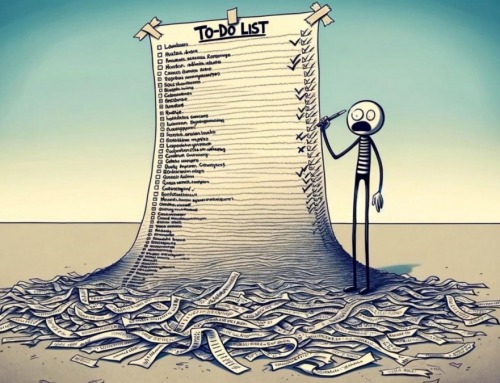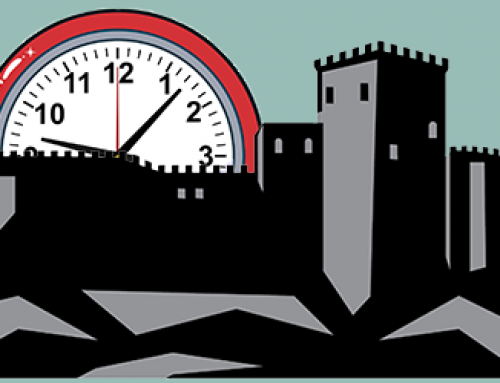Progressive Goal Planning offers a viable and effective alternative when other approaches fail. Progressive Goal Planning is the process of planning sequential goals. Each goals builds upon previously attained goals and ultimately toward the achievement of a greater, overarching goal. However, your end goal may not be known at the beginning of the process.
In Progressive Goal Planning, there’s no real end to the process. However, there is a basic evolution of goals toward a true endpoint that’s not known at the outset. This can eventually emerge from the planning process. Your evolution is not based on a change of mind, a distraction, or a change of course. It’s based on your new possibilities and opportunities that become available upon the accomplishment of each goal in between.
The Progressive Goal Planning Process
Step 1: Set an Attainable (Relatively) Short-Term Goal
Any achievable goal set today is better than the promise of something greater tomorrow!
If you have any doubt about the viability of annual or longer-term goals, then break them down into smaller and shorter-term goals. If you have any doubt about these subsequent goals, then break them down into even smaller and more near-term objectives. Ultimately, you can break down your goals into weekly or daily objectives.
Set or reduce the timing and magnitude of your goals to the smallest increments necessary. This will allow you to have confidence in both the direction of your activities and their intended outcome. If you find yourself with doubts about the attainability of your goals, uncertainty about how to achieve them, or facing any sort of goal setting crisis, focus on something that you CAN be successful in achieving in the near term.
Start with a simple question like, “What is the most important thing I can do today?”
The answer to this question can be the basis for a daily goal. You can use daily goals to pursue and build confidence in larger and longer-term goals with greater meaning and more impact. Never lose sight of the importance of daily goals and making a daily contribution. This can help cultivate attentiveness as you pursue your objectives.
Step 2: Focus on Frequency: Flex Your Goal Muscles
The ability to set and achieve goals is a skill similar to making a free throw in basketball. If you are going to become good at it, you have to practice and use the skill frequently.
An instructive parallel can be found in the phenomenon of muscle memory, as defined here:
Muscle memory, also known as motor learning, is a form of procedural memory that involves consolidating a specific motor task into memory through repetition. When a movement is repeated over time, a long-term muscle memory is created for that task; eventually allowing it to be performed without conscious effort. This process decreases the need for attention and creates maximum efficiency within the motor and memory systems. Examples of muscle memory are found in many everyday activities that become automatic and improve with practice, such as riding a bicycle or typing on a keyboard.
Goal setting is a mental exercise and doesn’t involve a motor task like riding a bicycle. It’s a skill that can be honed in a similar way through repetition and practice. It can deliver invaluable benefits by helping you travel from point A to point B. This will take you from planning to achievement and success.
Step 3: Measure for Mastery
Measurement is critically important, and it matters especially if you take your effort seriously. If you want to get really good at something, you must do it repeatedly. If you want to become the best at something, you must do it repeatedly and measure your results.
In many situations, success in even the most ambitious goals comes down to executing on the simple things, or a mastery of the basics. Measuring those simple things and keeping score is essential to tracking your progress toward mastery.
To demonstrate the concept of measuring for mastery, there are many good examples in the world of sports. We can take the game of basketball as an ideal example. Have you ever watched a game of pickup basketball where the teams are not keeping score? The game is certainly less organized, and there are often inconsistencies in effort. There are some good moves and occasional bursts of hard play, but it’s rare to see everyone on both teams playing at a vigorous pace and with maximum effort.
Now, compare that with an organized basketball game where the score is being kept. There’s a completely different level of participation from the athletes. There’s competition, and when the score is being kept, the participants step up their game. They exhibit greater attention and make greater efforts to work together and execute the simple things that are needed to win.
Similar examples can be found in virtually any sport, just as they can be found in business or personal development. When you are keeping score, there is a big difference in the level of attention and effort, and, ultimately, in the end results. Keep in mind, however, that there is a difference between measurement and accountability.
For many people, the term “accountability” has a negative connotation. It’s often associated with punitive or negative consequences for failing to achieve a result. In business and personal settings, this association can lead to tendencies to avoid goal setting because of the implied risk of failure. For example, in a corporate setting, there may be fear of termination or other punishment if you fail to achieve a goal.
The purpose of measuring for mastery in Progressive Goal Planning is not to judge a person or an effort as a failure or a success. It should simply be used as a way to measure whether the goal that was set was attainable and was accomplished. The results gathered in the measurement step should have a positive bias toward the affirmative.
Stated another way, if you are successfully using the Progressive Goal Planning methodology and therefore getting better at setting and achieving your goals, you should have a higher percentage of goals achieved vs. not achieved. Ultimately, it is this performance in goal setting and achievement that Progressive Goal Planning seeks to cultivate and that measuring for mastery is designed to evaluate.
Step 4: Review & Reset to Correct Your Course: Evaluate New Possibilities
As you pursue your goals, it’s critical to review your prior performance. The next step of the Progressive Goal Planning Cycle is to evaluate your performance. It’s critical to consider the impact of your achieved goals and how they affect your new possibilities. When you review your previously achieved goals as well as your missed targets, you can gain valuable perspectives to help you revise your goals or define your next objectives.
This step of the process is also helpful for identifying several important aspects of goals. You can identify goals that may have created unintended consequences. Also identify goals that may have created reward mechanisms that encourage behavior that may not be in alignment with your strategic objectives, or may be manipulations of the goal reward system. By incorporating this review stage into your process, you’re able to build in a safety mechanism into your goal setting and achievement process.
At this point, you should look to previous successes for new opportunities that may have presented themselves. It’s important to also look for insights on how to pursue these opportunities. Review any missed targets to learn why these goals were not attained and where you may have deviated from your intended course.
An important part of course correction is to see how you can benefit from the experience of prior goal setting and pursuit. As you review your prior performance, you may discover that your perspective has changed. There may even be a new direction in order. If you find yourself getting closer to your stated goal but further away from what “feels” like the right objective or path, you should dig deeper into those feelings and look for potential insights and course changes.
The purpose of goal setting should be to accelerate your achievement toward your strategic objectives. This step in the process is designed to make sure that you are achieving your goals. Make sure you are not following your goals blindly into a course that will take you off track.
To learn more about Progressive Goal Planning, watch this video:
You can download the Progressive Goal Planning whitepaper here.







